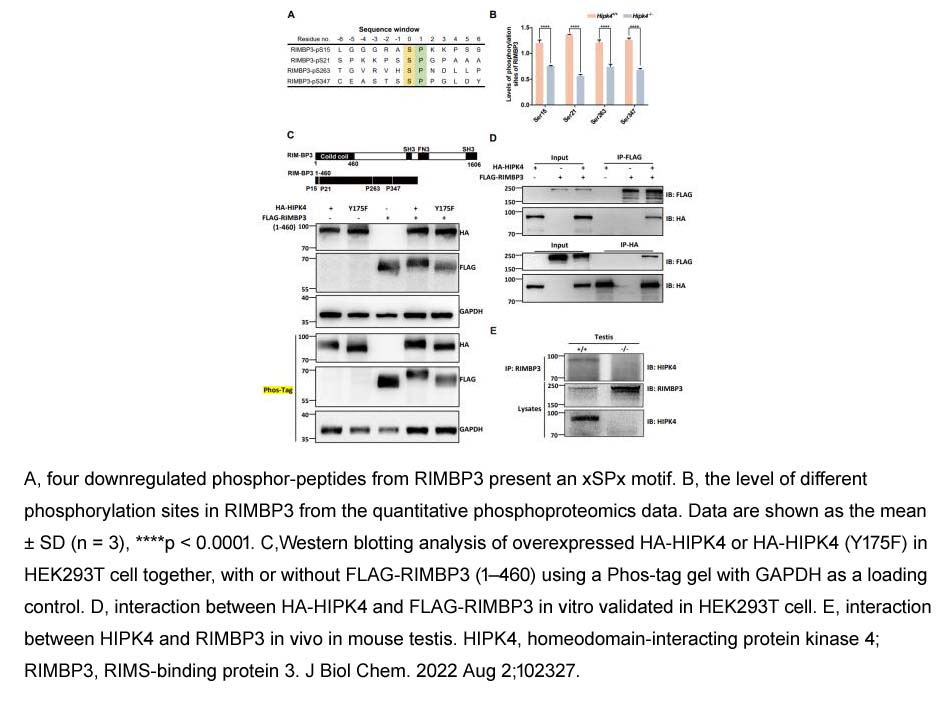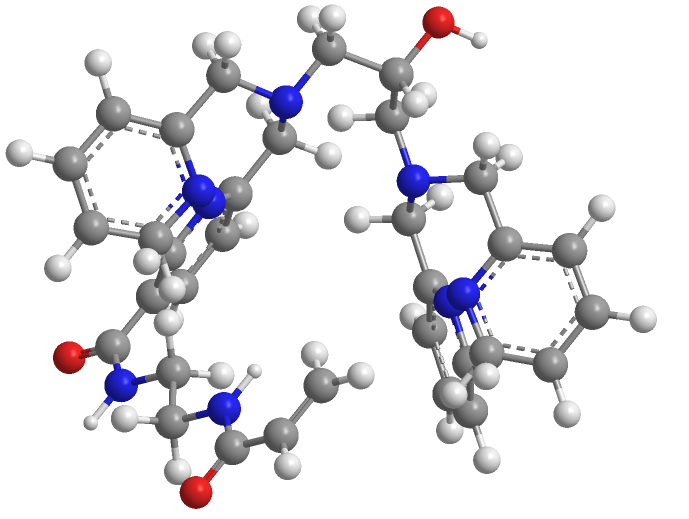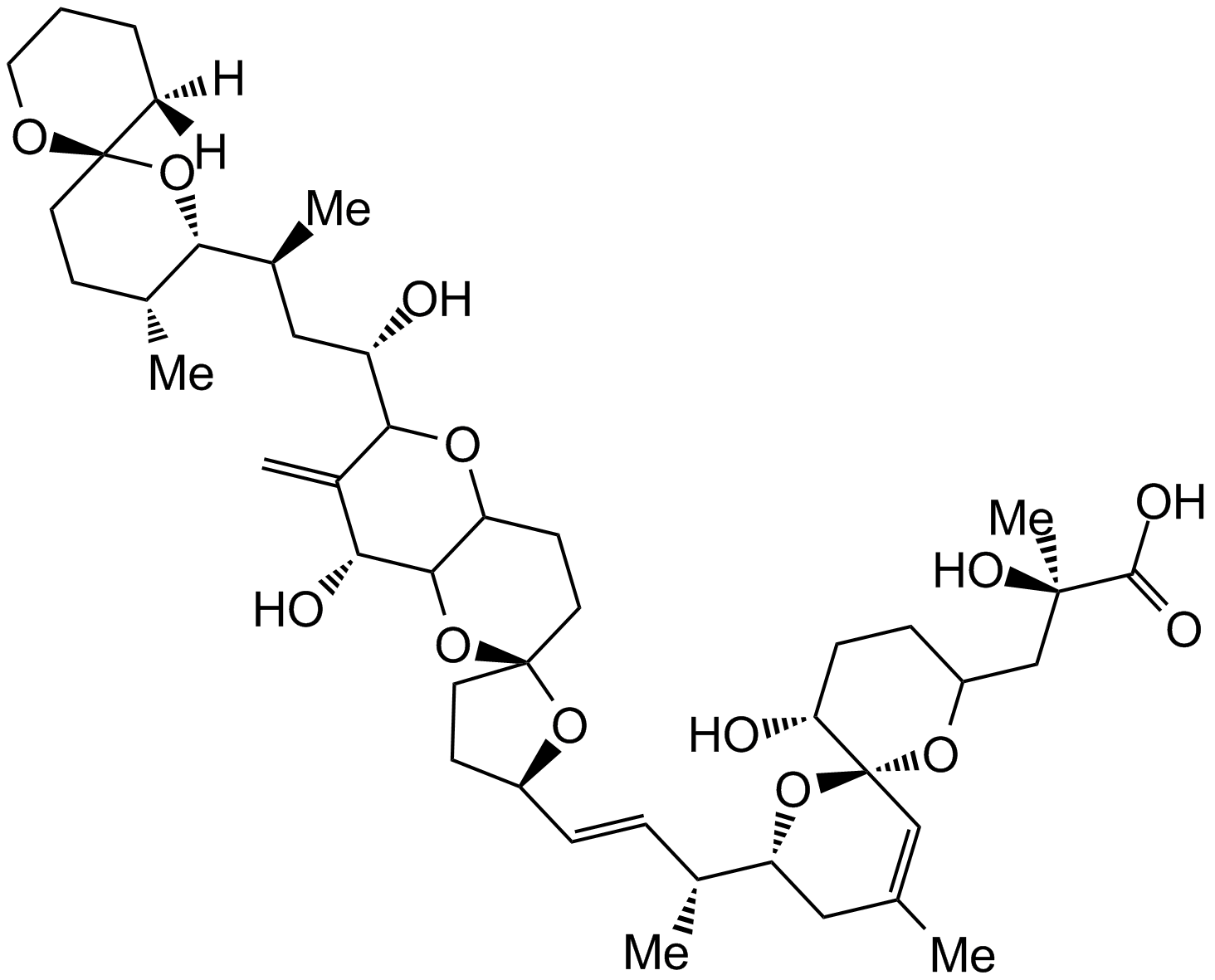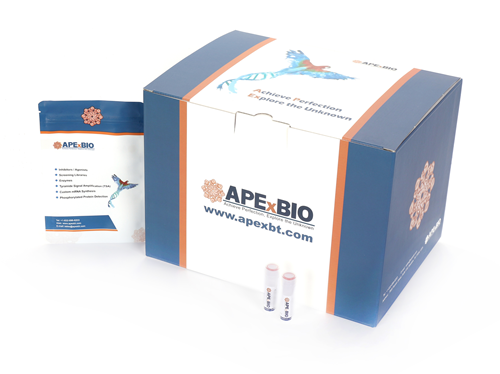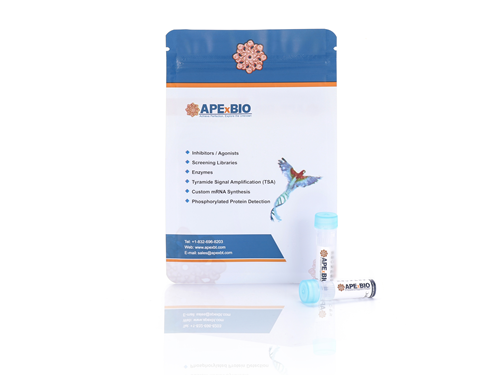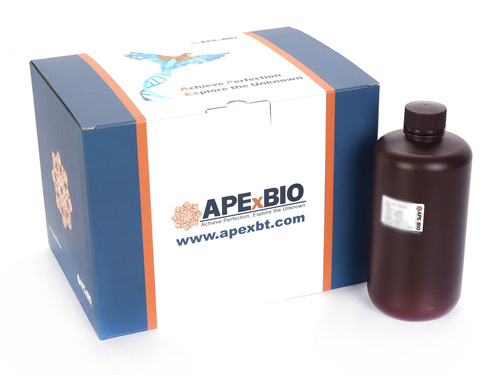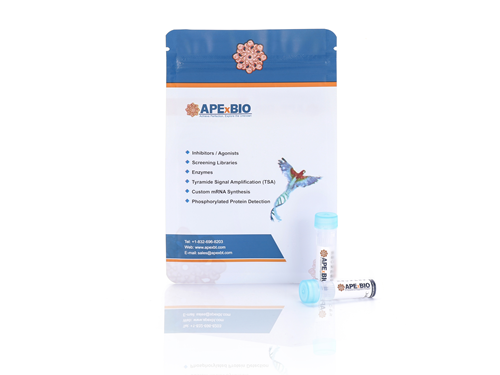Phos binding reagent (Phosbind) acrylamide
- 1. Rosa Eskandari, Maryam Fayyazi, et al. "EGO-like complex regulates TOR (Target of Rapamycin) activity and localization in Neurospora." bioRxiv. December 09, 2025
- 2. Shu Wang, Xin Xin, et al. "Plant-specific BLISTER modulates miRNA biogenesis by regulating MIR transcription, HYL1 phosphorylation, and nuclear transport in Arabidopsis." Nucleic Acids Res. 2025 Sep 23;53(18):gkaf1012. PMID: 41063343
- 3. Xueying Li, Bolun Li, Miao Wang. "Genome-wide identification of the calcium-dependent kinase CPK gene family in Salvia miltiorrhiza reveals that SmCPK24 promotes tanshinone biosynthesis." Industrial Crops and Products Volume 239, January 2026, 122418
- 4. Zhen Chen, Zhen He, Wei-Xin Luo. "Histidine kinase Hik33 plays a crucial role in UV-B-induced photosynthetic acclimation in cyanobacteria." Plant Physiol. 2025 Dec 18:kiaf661. PMID: 41411299
- 5. Meng Qi, Dong Meng, Yanqiong Zhang. "Hyperoside, a flavonoid, induces lnc187 and lnc999 to enhance pigeon pea pollen tube growth and seed production." Sci Adv. 2025 Nov 14;11(46):eadz3499. PMID: 41237233
- 6. Hang Yin, Yutong Tian, Zeyu Zhou. "Phosphorylation of EF-P aggravates Streptococcus suis-induced blood–brain barrier damage by enhancing serine protease production." Vet Res. 2025 Nov 7;56(1):215. PMID: 41204333
- 7. Yi Lu, Xiaoying Yu, Yandi Pan. "Antimicrobial peptide CATH-1 combats Streptococcus suis by targeting the serine/threonine kinase." Int J Antimicrob Agents. 2025 Oct 27:107656. PMID: 41161580
- 8. Ningning Li, Hongyu Hou, Dan Su. "PPP2/PP2A-mediated dephosphorylation of LC3B links PINK1-PRKN/Parkin-mediated mitophagy to SCA12 pathogenesis." Autophagy. 2025 Oct 8. PMID: 41059761
- 9. Xuecui Yin, Shuang Liu, et al. "Rosmarinic Acid Synthase 1 Phosphorylation by SmMAPK3 Is Required for Salicylic Acid-Induced Salvianolic Acid Accumulation in Salvia miltiorrhiza Hairy Roots." Plant Biotechnol J. 2025 Sep 23. PMID: 40985286
- 10. Lior Almagor, William I. Weis, et al. "Polarity protein Par6 facilitates the processive phosphorylation of Lgl via a dynamic interaction with aPKC." Commun Biol. 2025 Jul 1;8:967. PMID: 40595028
- 11. Hongrui Cao, Rongxiu Cui, et al. "Ca2+-dependent cytoplasmic and nuclear phosphorylation of STOP1 by CPK21 and CPK23 confers ALMT1-dependent aluminum resistance." Nat Commun. 2025 Jun 5;16(1):5225. PMID: 40473618
- 12. Bin Tian, Yanming Tian, et al. "Duck plague virus US3 kinase phosphorylates and induces STING degradation to inhibit innate immune responses." Poult Sci. 2025 May 26;104(8):105336. PMID: 40446687
- 13. Qian Qian, Weiguo Hu, Zhenzhen Bi. "The Cytokinin Oxidase/Dehydrogenase TaCKX11 - D Positively Regulates Grain Size in Wheat." J Exp Bot. 2025 May 13:eraf196. PMID: 40357640
- 14. Liang Xu, Ruiyi Zhou, et al. "Social hierarchy modulates drug reinforcement and protein phosphorylation in the nucleus accumbens." Front Pharmacol. 2025 Apr 11:16:1537131. PMID: 40290427
- 15. Yu Fu, Xiaoyan Kang, Wenting Li. "The low-dose CHK1 inhibitor prexasertib triggers VDAC1 dephosphorylation to activate mtDNA-STING signaling and synergize immunotherapy." Cell Rep . 2025 May 27;44(5):115605. PMID: 40249707
- 16. Huangzhuo Xiao, Jiaqi Hou, et al. "The receptor-like cytoplasmic kinase OsSTRK1 regulates brassinosteroid signaling by phosphorylating OsGSK2." Cell Rep. 2025 Apr 22;44(4):115569. PMID: 40220291
- 17. Zhi-Man Zhu, Fu-Chun Huo, et al. "METTL3-mediated m6A modification of PAK6 drives cervical cancer progression through activating MAPK14." Int J Biol Macromol. 2025 May;309(Pt 2):142880. PMID: 40194572
- 18. Kai Li , Rui Liu , et al. "Marek's disease virus protein kinase US3 inhibits DNA-sensing antiviral innate immunity via abrogating activation of NF-κB." Microbiol Spectr. 2025 Apr;13(4):e0234724. PMID: 40042340
- 19. Sapir Nachum-Raines, Noy Gamliel, et al. "Cdk1 and PP2A constitute a molecular switch controlling orderly degradation of atypical E2Fs." bioRxiv [Preprint]. 2025 Feb 23:2025.02.23.639703. PMID: 40027684
- 20. Zhicheng Huang, Qing Wang, et al. "A multilayered regulatory network mediated by protein phosphatase 4 controls carbon catabolite repression and de-repression in Magnaporthe oryzae." Commun Biol. 2025 Jan 28;8(1):130. PMID: 39875495
- 21. David M. Renner, Nicholas A. Parenti, et al. "Betacoronaviruses Differentially Activate the Integrated Stress Response to Optimize Viral Replication in Lung-Derived Cell Lines." Viruses. 2025 Jan 16;17(1):120. PMID: 39861909
- 22. Xiang-Yang Hao, Tai-Fei Yu, et al. "Somatic embryogenetic receptor kinase TaSERL2 regulates heat stress tolerance in wheat by influencing TaBZR2 protein stability and transcriptional activity." Plant Biotechnol J. 2025 Apr 4
- 23. Lior Almagor,William Weis, et al. "An Efficient Off-Membrane Switch: Par6 Facilitates Processive Phosphorylation of Lgl's Serine Sites via a Dynamic Interaction with aPKC." Research Square. 12 Jan, 2025
- 24. Yi Kan, Xiao-Rui Mu, Fangfang Qu. "A stepwise decoding mechanism for heat sensing in plants connects lipid remodeling to a nuclear signaling cascade." Cell 188, 1–19, December 24, 2025
- 25. Yonghong Xie, Kaichong Teng, Zhupeng Fan. "The E3 ubiquitin ligase OsPUB9 modulates the abscisic acid signaling complex to respond cold stress in rice." Authorea. June 02, 2025
- 26. David M Renner, Nicholas A Parenti, et al. "BETACORONAVIRUSES DIFFERENTIALLY ACTIVATE THE INTEGRATED STRESS RESPONSE TO OPTIMIZE VIRAL REPLICATION IN LUNG DERIVED CELL LINES." bioRxiv. 2024 Sep 26:2024.09.25.614975. PMID: 39386680
- 27. Jihuan Hou, Kunrong Mei, et al. "TGM1/3-mediated transamidation of Exo70 promotes tumor metastasis upon LKB1 inactivation." Cell Rep. 2024 Aug 14;43(8):114604. PMID: 39146185
- 28. Tahrima Saiha Huq, Jean Luo, et al. "Naturally occurring hyperactive variants of human parkin." Commun Biol. 2024 Aug 8;7(1):961. PMID: 39117722
- 29. Shanshan Liu, Yidan Shao, et al. "SepM mutation in Streptococcus mutans clinical isolates and related function analysis." BMC Oral Health. 2024 Jun 25;24(1):730. PMID: 38918777
- 30. Yangkun Li, Lei Mu, et al. "Golgi dispersal in cancer stem cells promotes chemoresistance of colorectal cancer via the Golgi stress response." Cell Death Dis. 2024 Jun 15;15(6):417. PMID: 38879509
- 31. Zhongwei Xu, Kaiyuan Fan, et al. "The application of proteomics and phosphoproteomics to reveal the molecular mechanism of salidroside in ameliorating myocardial hypoxia." Heliyon. 2024 Apr 28;10(9):e30433. PMID: 38737233
- 32. Cancan Zhang, Yinyin Xu, et al. "Phosphorylation of FOXK2 at Thr13 and Ser30 by PDK2 sustains glycolysis through a positive feedback manner in ovarian cancer." Oncogene. 2024 Jun;43(26):1985-1999. PMID: 38734828
- 33. Ananya Acharya, Hélène Bret, et al. "Mechanism of DNA unwinding by MCM8-9 in complex with HROB." Nat Commun. 2024 Apr 27;15(1):3584. PMID: 38678026
- 34. Yuqing Yan, Hui Wang, et al. "OsATL32 ubiquitinates the reactive oxygen species-producing OsRac5–OsRbohB module to suppress rice immunity." J Integr Plant Biol. 2024 Apr 17. PMID: 38629772
- 35. J Tabitha Hees, Simone Wanderoy, et al. "Insulin signalling regulates Pink1 mRNA localization via modulation of AMPK activity to support PINK1 function in neurons." Nat Metab. 2024 Mar 19;6(3):514–530. PMID: 38504131
- 36. Tiefeng Jin, Lingling Ding, et al. "BUB1/KIF14 complex promotes anaplastic thyroid carcinoma progression by inducing chromosome instability." J Cell Mol Med. 2024 Apr;28(7):e18182. PMID: 38498903
- 37. Deyue Yu, et al. "The Myb73-GDPD2-GA2ox1 transcriptional regulatory module confers phosphate deficiency tolerance in soybean." Plant Cell. 2024 Feb 12:koae041. PMID: 38345432
- 38. Hongliang Wang, et al. "N-terminal acetyltransferase 6 facilitates enterovirus 71 replication by regulating PI4KB expression and replication organelle biogenesis." J Virol. 2024 Feb 20;98(2):e0174923. PMID: 38189249
- 39. Hui Jiang, et al. "A mitophagy sensor PPTC7 controls BNIP3 and NIX degradation to regulate mitochondrial mass." Mol Cell. 2024 Jan 18;84(2):327-344.e9. PMID: 38151018
- 40. Eugenia Wulff-Fuentes, Jeffrey Boakye, et al. "O-GlcNAcylation regulates OTX2's proteostasis." iScience. 2023 Oct 12;26(11):108184. PMID: 38026167
- 41. Anna C Howes, Olga Perisic, et al. "Structural insights into the activation of ataxia-telangiectasia mutated by oxidative stress." Sci Adv. 2023 Sep 29;9(39):eadi8291. PMID: 37756394
- 42. Yunran Zhang, Yunyun Wei, et al. "Cand2 Inhibits CRL-mediated Ubiquitination and Suppresses Autophagy to Facilitate Pathogenicity of Phytopathogenic Fungi." Plant Commun. 2023 Sep 16:100720. PMID: 37718510
- 43. Pengfei Cheng, Yueqiao Wang, et al. "Molecular hydrogen positively regulates nitrate uptake and seed size by targeting nitrate reductase." Plant Physiol. 2023 Aug 25;kiad474. PMID: 37625793
- 44. Heting Wang, Xuya Pan, et al. "CRISPR screen identifies the role of RBBP8 in mediating unfolded protein response induced liver damage through regulating protein synthesis." Cell Death Dis. 2023 Aug 18;14(8):531. PMID: 37591836
- 45. Ananya Acharya, Hélène Bret, et al. "Mechanism of DNA unwinding by hexameric MCM8-9 in complex with HROB." Res Sq. 2023 Jun 26:rs.3.rs-3054483. PMID: 37461676
- 46. Jiahui Liu, Xiaoyun Wu, et al. "A plant RNA virus inhibits NPR1 sumoylation and subverts NPR1-mediated plant immunity." Nat Commun. 2023 Jun 16;14(1):3580. PMID: 37328517
- 47. Kai Niu, Yu Meng, et al. "Phosphorylation of GntR reducesStreptococcus suisoxidative stress resistance and virulence by inhibiting NADH oxidase transcription." PLoS Pathog. 2023 Mar 13;19(3):e1011227. PMID: 36913374
- 48. Yunwen Yang, Suwen Liu, et al. "DNA-dependent protein kinase catalytic subunit (DNA-PKcs) drives chronic kidney disease progression in male mice." Nat Commun. 2023 Mar 11;14(1):1334. PMID: 36906617
- 49. Sun Q, Ma H, et al. "A Self‐Sustaining Antioxidant Strategy for Effective Treatment of Myocardial Infarction." Adv Sci (Weinh) 2023 Feb;10(5) PMID: 36567266
- 50. Wang B, Stevenson EL, et al. "Functional analysis of 110 phosphorylation sites on the circadian clock protein FRQ identifies clusters determining period length and temperature compensation." G3 (Bethesda) 2023 Feb 09;13(2) PMID: 36537198
- 51. Yan Xiong, Jaiprakash Sharma, et al. "TFEB degradation is regulated by an IKK/β-TrCP2 phosphorylation-ubiquitination cascade." bioRvix. October 19, 2023
- 52. Akhtari, Golnoush, et al. "The Relationship Between TOR Activity and the Circadian Clock of Neurospora crassa." Communities & Collections. Aug 04, 2023
- 53. J. Tabitha Hees, Angelika B. Harbauer, et al. "Insulin signaling regulates Pink1 mRNA localization via modulation of AMPK activity to support PINK1 function in neurons." bioRvix. February 06, 2023
- 54. Meng-Yu Liu, Li-Xiao Sun, et al. "De NovoPurine Nucleotide Biosynthesis Pathway Is Required for Development and Pathogenicity inMagnaporthe oryzae." J Fungi (Basel). 2022 Aug 29;8(9):915. PMID: 36135640
- 55. Xiaofei Liu, Chunyan Zang, et al. "Homeodomain-interacting protein kinase HIPK4 regulates phosphorylation of manchette protein RIMBP3 during spermiogenesis." J Biol Chem. 2022 Aug 2;102327. PMID: 35931115
- 56. Jian Huang, Luxin Wang, et al. "CDC-like kinase 4 deficiency contributes to pathological cardiac hypertrophy by modulating NEXN phosphorylation." Nat Commun. 2022 Jul 30;13(1):4433. PMID: 35907876
- 57. Huilin Li, Jiali Ou, et al. "ISX-9 potentiates CaMKIIδ-mediated BMAL1 activation to enhance circadian amplitude." Commun Biol. 2022 Jul 28;5(1):750. PMID: 35902736
- 58. Jia Yuan, Qingchen Zhu, et al. "Ezh2 competes with p53 to license lncRNA Neat1 transcription for inflammasome activation." Cell Death Differ. 2022 May 14. PMID: 35568718
- 59. Hong Gao, Liangyu Jiang , et al. "GmMKK4‐activated GmMPK6 stimulates GmERF113 to trigger resistance to Phytophthora sojae in soybean." Plant J. 2022 Jul;111(2):473-495. PMID: 35562858
- 60. Gang Xiang, Shuxuan Wang, et al. "UBR5 targets tumor suppressor CDC73 proteolytically to promote aggressive breast cancer." Cell Death Dis. 2022 May 12;13(5):451. PMID: 35551175
- 61. Guangli Wang, Chan Fan, et al. "Type VI secretion system-associated FHA domain protein TagH regulates the hemolytic activity and virulence of Vibrio cholerae." Gut Microbes. 2022 Jan-Dec;14(1):2055440. PMID: 35383540
- 62. Yajing Song, Ruofan Niu, et al. "OsSLA1 functions in leaf angle regulation by enhancing the interaction between OsBRI1 and OsBAK1 in rice." Plant J. 2022 Mar 11. PMID: 35275421
- 63. Zhao-Huan Zhang, Jian-Mei Xiong, et al. "WNK3-PER1 interactions regulate the circadian rhythm in the suprachiasmatic nucleus in rats." Am J Transl Res. 2022 Feb 15;14(2):1001-1009. PMID: 35273702
- 64. Guo-Xiang Zhou, Wei-Bo Liu, et al. "Environmental cadmium impairs blood-testis barrier via activating HRI-responsive mitochondrial stress in mice." Sci Total Environ. 2021 Dec 9;810:152247. PMID: 34896485
- 65. Weiwei Fu, Megan T Zhao, et al. "NUAK family kinase 2 is a novel therapeutic target for prostate cancer." Mol Carcinog. 2021 Nov 24. PMID: 34818445
- 66. Qing Ye, Yingying Zhang, et al. "The important roles and molecular mechanisms of annexin A2 autoantibody in children with nephrotic syndrome." Ann Transl Med. 2021 Sep;9(18):1452. PMID: 34734004
- 67. Qian Zhang, Tao Song, et al. "OsANN4 modulates ROS production and mediates Ca2+ influx in response to ABA." BMC Plant Biol. 2021 Oct 18;21(1):474. PMID: 34663209
- 68. Joseph O Magliozzi, James B Moseley. "Pak1 kinase controls cell shape through ribonucleoprotein granules." Elife. 2021 Jul 20;10:e67648 PMID: 34282727
- 69. Fan XJ, Wang YL, et al. "NONO phase separation enhances DNA damage repair by accelerating nuclear EGFR-induced DNA-PK activation." Am J Cancer Res. 2021 Jun 15;11(6):2838-2852 PMID: 34249431
- 70. Yamin Meng, Xing Zhang, et al. "A Novel Nitrogen and Carbon Metabolism Regulatory Cascade Is Implicated in Entomopathogenicity of the Fungus Metarhizium robertsii." mSystems. 2021 Jun 29;6(3):e0049921. PMID: 34156296
- 71. Wirth M, Mouilleron S, et al. "Phosphorylation of the LIR Domain of SCOC Modulates ATG8 Binding Affinity and Specificity." J Mol Biol. 2021 Jun 25;433(13):166987 PMID: 33845085
- 72. Haijing Guo, Jen-Hsuan Wei, et al. "Importin α phosphorylation promotes TPX2 activation by GM130 to control astral microtubules and spindle orientation." J Cell Sci. 2021 Feb 19;134(4):jcs258356 PMID: 33526712
- 73. Li kaihuai, Gaoge Xu, et al. "A predatory soil bacterium reprograms a quorum sensing signal system to regulate antifungal weapon production in a cyclic-di-GMP-independent manner." Research Square. March 11th, 2021
- 74. Amina Merwa LEKEHAL. "altFUS, the second protein encoded in the FUS gene, inhibits mitochondrial recruitment of PARKIN." Mars, 2021
- 75. Chengcheng Wang, Taiping Zhang, et al. "Metformin inhibits pancreatic cancer metastasis caused by SMAD4 deficiency and consequent HNF4G upregulation." Protein & Cell (2020);31 July 2020 PMID: 32737864
- 76. Wen-Jie Shu, Runfa Chen, et al. "Rph1 coordinates transcription of ribosomal protein genes and ribosomal RNAs to control cell growth under nutrient stress conditions." Nucleic Acids Res. 2020 Sep 4;48(15):8360-8373 PMID: 32619236
- 77. Domagoj Bareti_x005f_x0001_, Michael Jenkyn-Bedford, et al. "Cryo-EM Structure of the Fork Protection Complex Bound to CMG at a Replication Fork." Mol Cell. 2020 Apr 29;S1097-2765(20)30254-9 PMID: 32369734
- 78. Huang CY, Gonzalez-Lopez C, et al. "hipBA toxin-antitoxin systems mediate persistence in Caulobacter crescentus." Sci Rep. 2020;10(1):2865 PMID: 32071324
- 79. Zhixiao Liu, Liujun Wang, et al. "Heterogeneous Responses to Mechanical Force of Prostate Cancer Cells Inducing Different Metastasis Patterns." Adv. Sci. 2020, 1903583
- 80. Haijing Guo, Jen-Hsuan Wei, et al. "TPX2 activation by GM130 controls astral microtubule formation and spindle orientation." bioRxiv. March 17, 2020
- 81. Xie Y, Lv X, et al. "HPD degradation regulated by the TTC36-STK33-PELI1 signaling axis induces tyrosinemia and neurological damage." Nat Commun. 2019 Sep 19;10(1):4266 PMID: 31537781
- 82. Jing ZF, Bi JB, et al. "miR-19 promotes the proliferation of clear cell renal cell carcinoma by targeting the FRK-PTEN axis." Onco Targets Ther. 2019 Apr 10;12:2713-2727 PMID: 31043790
- 83. Wang B, Kettenbach AN, et al. "The Phospho-Code Determining Circadian Feedback Loop Closure and Output in Neurospora." Mol Cell. 2019 Mar 26. pii: S1097-2765(19)30177-7 PMID: 30954403
- 84. Li Zhang, Ruci Wang, et al. "Separable regulation of POW1 in TAF2-mediated grain development and BR-mediated leaf angle formation in rice." bioRxiv. 2019 November 04
- 85. Jordann Alyse Smak. "Cell Cycle-Specific Functions and Regulation of the DNA Nuclease SNM1B." University of Michigan. 2019
- 86. Yu J, Deng T, et al. "Structural basis for protein phosphatase 1 recruitment by glycogen-targeting subunits." FEBS J. 2018 Dec;285(24):4646-4659 PMID: 30422398
- 87. Yin Y, Wu S, et al. "The MAPK kinase BcMkk1 suppresses oxalic acid biosynthesis via impeding phosphorylation of BcRim15 by BcSch9 in Botrytis cinerea." PLoS Pathog. 2018 Sep 13;14(9):e1007285 PMID: 30212570
- 88. Sauvé V, Sung G, et al. "Mechanism of parkin activation by phosphorylation." Nat Struct Mol Biol. 2018 Jul;25(7):623-630 PMID: 29967542
1. Recognition of all phosphorylated forms of Tyr/Ser/Thr.
2. Followed by Western blotting and Mass analysis.
3. Simultaneous detection of phosphorylated/non-phosphorylated proteins using the total antibody without the anti phosphorylated protein.
4. Simply add Phos binding reagent acrylamide and MnCl2 solution* to acrylamide solution in the preparation of SDS-PAGE gel.
(*: Add 5.0 mM Phos binding reagent Acrylamide Aqueous Solution and 10 mM MnCl2 solution in equal amount in the gel).
1. M. J. Hubbard, P. Cohen. On target with a new mechanism for the regulation of protein phosphorylation. Trends Biochem. Sci. 18: 172 (1993).
2. B. Agnew et al. Compositions and methods for detection and isolation of phosphorylated molecules. US Patent # 7,102,005. (September 5, 2006).
| Storage | 2-10℃ |
| M.Wt | 594.71 |
| Formula | C33H38N8O3 |
| Solubility | >29.7mg/mL in DMSO |
| Shipping Condition | Small Molecules with Blue Ice, Modified Nucleotides with Dry Ice. |
| General tips | We do not recommend long-term storage for the solution, please use it up soon. |
Quality Control & MSDS
- View current batch:
-
Purity = 98.00%
- COA (Certificate Of Analysis)
- MSDS (Material Safety Data Sheet)
Related Biological Data
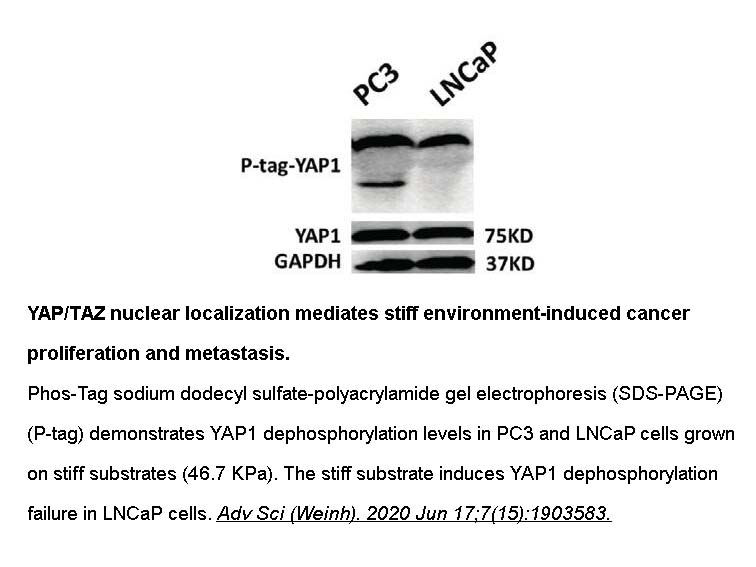
Related Biological Data
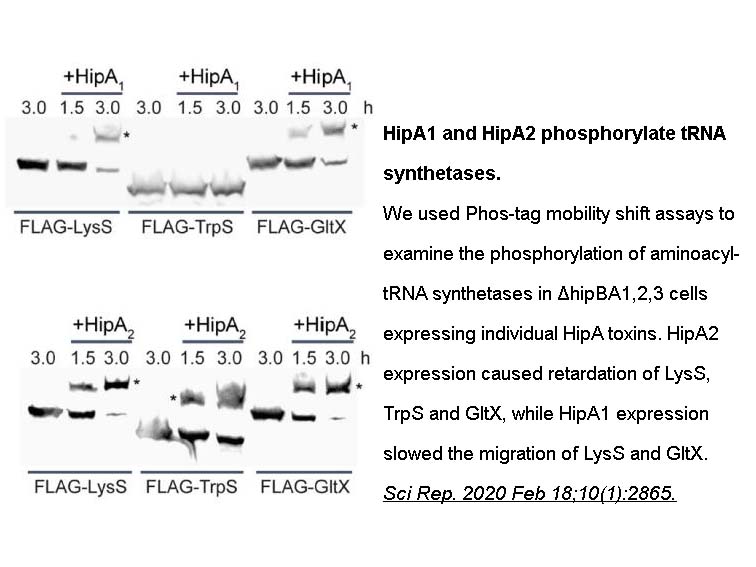
Related Biological Data
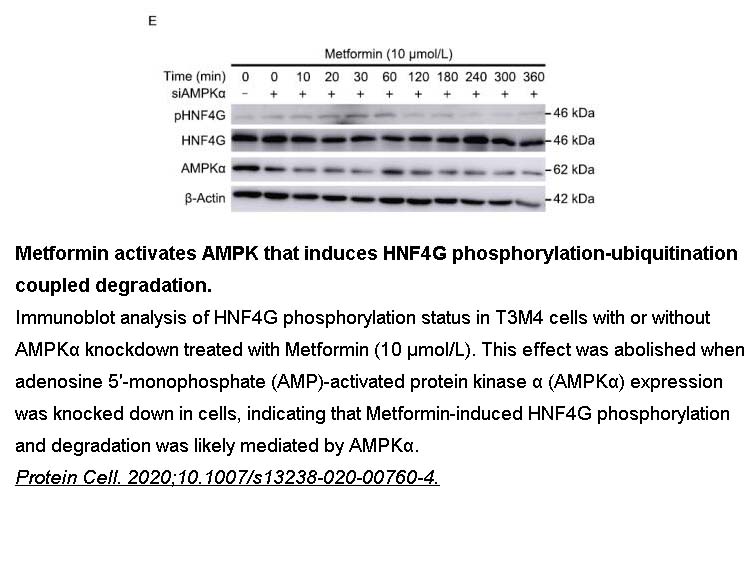
Related Biological Data
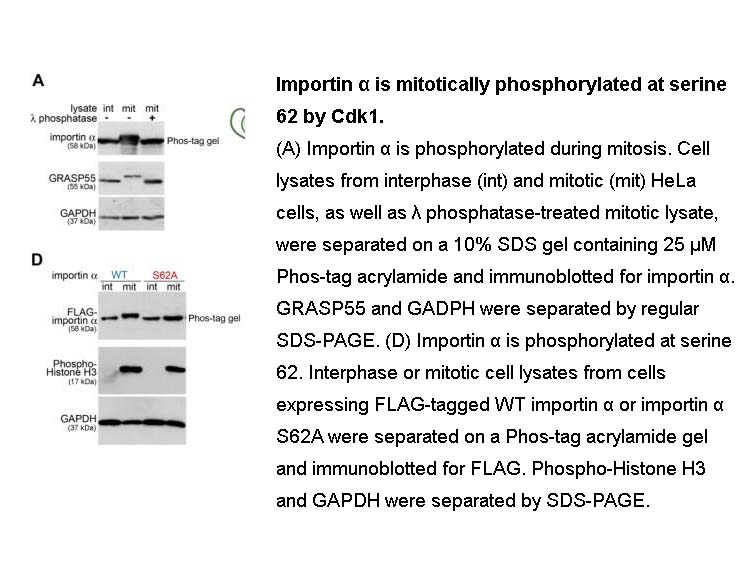
Related Biological Data
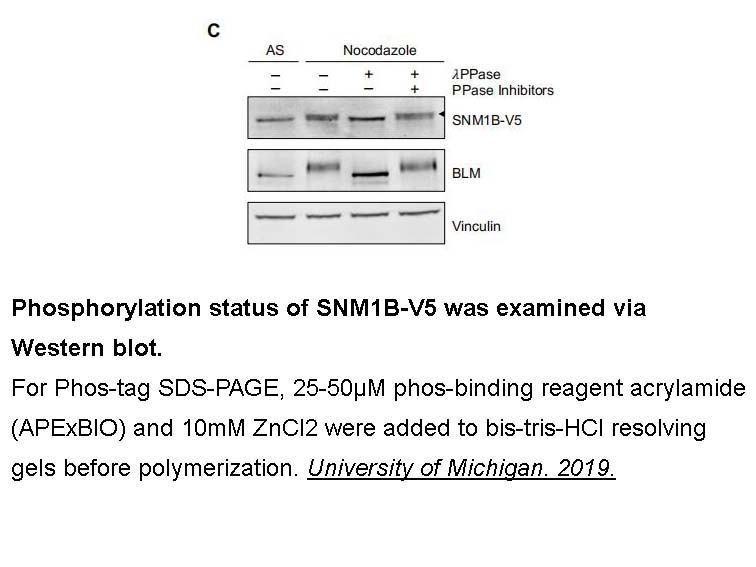
Related Biological Data
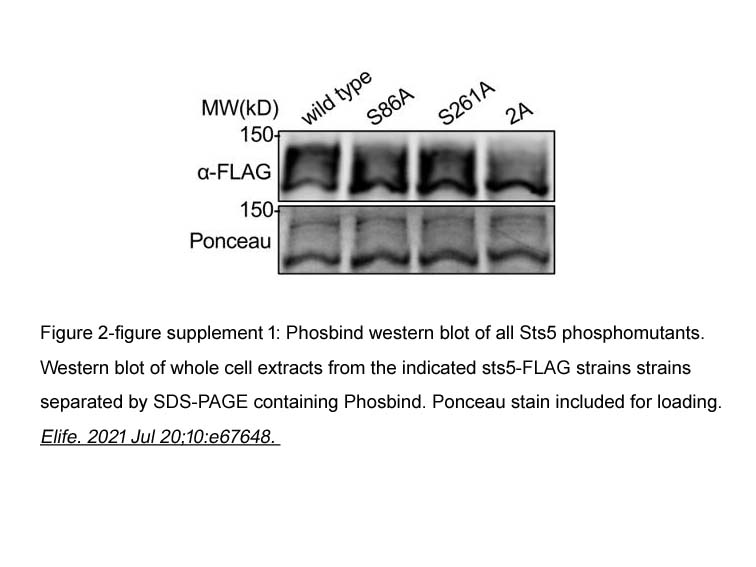
Related Biological Data

Related Biological Data
